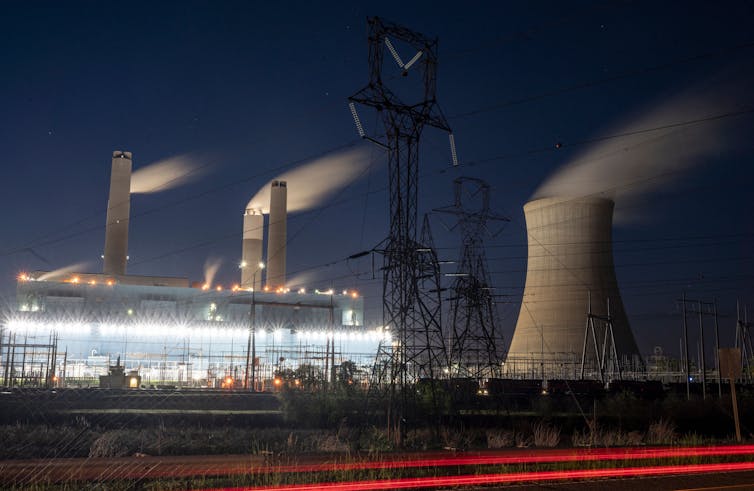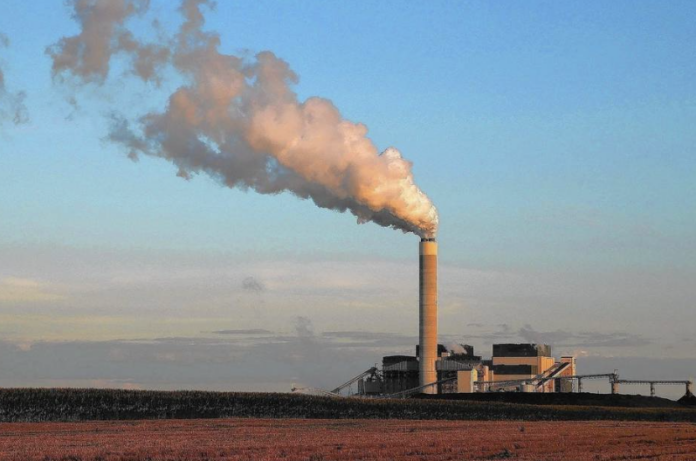Biden’s strategy for cutting carbon emissions from electricity generation could extend the lives of fossil fuel power plants

By Jennifer K. Rushlow, Vermont Law & Graduate School
On May 11, 2023, the Biden administration proposed new regulations to curb carbon pollution from existing power plants. The new rules replace the Obama administration’s Clean Power Plan, which was proposed in 2015 but ran into multiple legal challenges and never took effect. Nonetheless, in a high-profile 2022 ruling, West Virginia v. EPA, the U.S. Supreme Court found that the Obama administration’s approach exceeded the Environmental Protection Agency’s authority to regulate power plant carbon pollution under the Clean Air Act.
Jennifer K. Rushlow, dean of the Vermont School for the Environment and a law professor at Vermont Law & Graduate School, explains how the new regulations are designed and the delicate balance they attempt to strike between slowing climate change and avoiding further legal setbacks.
1. How has the Biden administration tailored these regulations in response to the West Virginia v. EPA ruling?
The scent of West Virginia v. EPA is all over the new proposed rules. How could it not be? The Supreme Court accused the Environmental Protection Agency of attempting a “wholesale restructure” of the nation’s energy mix because the Obama administration’s Clean Power Plan essentially required existing fossil fuel power plants to either use cleaner fuels or close.
The new proposed regulations attempt to thread the needle between meeting the Biden administration’s climate commitments and avoiding another gutting in court. To do that, they focus on reducing greenhouse gas emissions from individual power plants with on-site technologies, instead of requiring a large-scale shift from fossil fuels to renewables.
The rules rely on ambitious and relatively new emissions reduction technologies, like carbon capture and storage, or CCS, and low-carbon hydrogen fuel. The EPA proposes to use CCS to reduce emissions from large coal plants with long life expectancies. For large natural-gas-fueled power plants that provide baseload power – meaning that they run continuously – the agency proposes at least partial replacement of natural gas with hydrogen fuel.
2. Do the draft rules indicate that EPA is responding to energy industry critiques of the Clean Power Plan?
There are a variety of strategies built into EPA’s approach in the new rules that I believe aim to secure buy-in from fossil fuel interests and mitigate against conservative backlash. The proposal takes a tiered and staggered approach to which power plants will be regulated, how stringently, and by when.
First, the EPA goes out of its way to accommodate coal plants that are already scheduled to close or anticipate shutting down in the next couple of decades. It proposes much less stringent standards for these plants, since they will not be able to spread the cost of adopting new controls over many years of operation. Since the regulations are so light for those facilities, and the plants are already closing due to other economic factors, it will be hard to blame these rules for the loss of coal plants.
Along the same rationale, the EPA is only regulating baseload natural gas plants right now and leaving regulations for smaller plants and peaker plants – those that run only during peak demand periods – for another day.
Second, the rule’s reliance on carbon capture and storage, in my view, ought to be music to fossil fuel companies’ ears. CCS has long been their preferred climate mitigation tool because it is one of the only means of reducing carbon emissions that does not hamper the continued extraction and combustion of fossil fuels.
Even better from their perspective, the captured carbon effluent can be injected into geological formations for underground storage and actually flush out buried crude oil that would otherwise be unreachable – meaning even more oil production.
The EPA solicits very specific comments in these regulations from interested parties, like the energy industry, on questions such as the time frame required to implement a particular technology and what size facilities should be subject to which standards. In addition to genuinely wanting to get the rules right, this deferential approach may be designed to build an administrative record that can withstand judicial scrutiny when the agency is inevitably sued. If the regulated community provides feedback on those items, and the final rule shows that the agency was responsive to that feedback, it will be harder for a court to find that compliance with the rule is not feasible.
New EPA regulations could force power plants to install new technology or stop using coal and gas https://t.co/Y8Kvs79nKt
— Chicago Tribune (@chicagotribune) May 11, 2023
3. Do you see legal vulnerabilities in the proposed new rules?
The EPA’s authority to regulate greenhouse gas emissions from existing power plants is derived from the Clean Air Act, which requires the agency to set emissions limits using a standard that reflects the “best system of emission reduction” that has been “adequately demonstrated,” taking into account cost and other factors.
For coal plants, the agency identifies carbon capture and storage as the “best system of emission reduction.” The draft rule states that CCS has been “adequately demonstrated” – meaning that some plants are using it – and that the cost is manageable, thanks to tax incentives in the Inflation Reduction Act.
This reasoning is a little thin. CCS is an emerging technology that’s not yet widely used, in part because it is so expensive. In fact, the EPA could point to only a handful of existing projects to show that the technology has been “adequately demonstrated.”
However, regulated coal plants won’t necessarily be required to use CCS itself. Rather, they will be required to reduce their emissions to a level that could be achieved using CCS. If they can find other means, they are welcome to use them. But since CCS is expensive and not yet widely used, some observers speculate that the new rules will cause coal plants to shut down or switch to cleaner fuels, as the Clean Power Plan required.
This is not a topic that the EPA wants to revisit with the Supreme Court. However, if the court’s conservative majority sticks to its avowed preference for “textualist” interpretations of the law, the proposed regulations provide plenty of room for the court to find in the administration’s favor, on the basis that the new rules stick to much more familiar territory within the Clean Air Act than the Clean Power Plan did.
4. How do these regulations conform with Biden’s focus on environmental justice?
In addition to greenhouse gases, fossil fuel power plants emit deadly air pollutants that contribute to thousands of deaths every year. And they disproportionately harm the health of nearby low-income communities and communities of color.
Carbon capture and storage doesn’t reduce these pollutants at any significant scale, nor does it prevent public health, environmental and cultural damage caused by fossil fuel extraction projects. As a result, some communities view CCS as incompatible with environmental justice principles.
Some of these criticisms surfaced last year, when the White House developed guidance on CCS. For example, the Indigenous Environmental Network – a grassroots coalition of Indigenous peoples and tribal governments – delivered scathing comments that CCS perpetuates fossil fuel extraction and combustion that harm Indigenous communities.
These draft rules may widen the rift between traditional environmentalists, some of whom prioritize curbing climate change at all costs, and environmental justice community advocates who face immediate harm from fossil fuel power plants, as well as mounting and disproportionate impacts from climate change.![]()
Jennifer K. Rushlow, Dean, Vermont School for the Environment, and Professor of Law, Vermont Law & Graduate School
This article is republished from The Conversation under a Creative Commons license. Read the original article.



